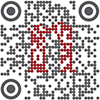| |||||||||||||||
| |||||||||||||||
| Hello Nature readers, | |||||||||||||||
| |||||||||||||||
| |||||||||||||||
Brain implants help after severe head injuryBrain implants that activate and restore connections between damaged neurons have improved cognition in people with traumatic brain injuries. The five participants in a small clinical trial had a 15–52% improvement in their processing speed in a cognitive test after three months. The implants send an electrical current to parts of the brain involved in attention, decision-making and working memory. "For some participants, the improvements have been transformative, even many years after the injury," says neurosurgeon Jaimie Henderson. Nature | 4 min readReference: Nature Medicine paper | |||||||||||||||
Model predicts when sea life will get tangledResearchers have developed a way to forecast when whales and turtles are likely to get entangled in fishing gear — almost a year in advance. The model uses widely available, low-resolution, global forecasts of sea surface temperature to accurately predict water temperatures that draw the animals to certain areas. The method could give fishers plenty of warning of the need to pause their work, moderating the impact on their livelihoods and saving more animals. Nature | 4 min readReference: Nature Communications paper | |||||||||||||||
| |||||||||||||||
 | |||||||||||||||
| A painting made more than 43,000 years ago shows an anoa, or dwarf buffalo. (Ulet Ifansasti for Nature) | |||||||||||||||
Scientists race to save ancient cave paintingsSome of the oldest pictures in the world were drawn more than 45,000 years ago in caves on the southwestern peninsula of Sulawesi in Indonesia. Despite having lasted so long, they're now disappearing as the surface of the cave walls is peeling off from the white limestone underneath. No one knows exactly why, but researchers point to pollution, climate change, human exhalations and the dust and vibrations produced by mining as possible causes. Scientists are scrambling to solve the mystery before the paintings are lost for good. Nature | 14 min read | |||||||||||||||
 | |||||||||||||||
ACCESS NATURE AND 54 OTHER NATURE JOURNALS Nature+ is our most affordable 30-day subscription, giving you online access to a wide range of specialist Nature Portfolio journals, including Nature. Nature+ is for personal use and is suitable for students. | |||||||||||||||
Ill-informed AI use fuels irreproducibilityThe naive use of artificial intelligence (AI) is driving a deluge of unreliable, useless or wrong research. This has happened, for example, when researchers report that algorithms can reliably classify images or even diagnose diseases, but fail to realize that their systems are really only regurgitating artefacts in the training data. "AI provides a tool that allows researchers to 'play' with the data and parameters until the results are aligned with the expectations," says computer scientist Lior Shamir. There are checklists that can help scientists to avoid common problems, such as insufficient separation between training and test data. Many argue that the way forward is to make all code and data available for public scrutiny. Nature | 14 min read | |||||||||||||||
Quote of the day"Done right, grant writing can reconnect you with the joy that led you to become a scientist in the first place."By reframing grant writing as a way to rediscover your purpose, practise your writing and build community, the 'necessary evil' can actually become fun and fulfilling, say trainers Courtney Peña, Amber Moore and Crystal Botham. (Nature | 5 min read) | |||||||||||||||
| | |||||||||||||||
| |||||||||||||||
| | |||||||||||||||
| Want more? Update your preferences to sign up to our other free Nature Briefing newsletters:
| |||||||||||||||
| |||||||||||||||
| You received this newsletter because you subscribed with the email address: manojdole1.Lens@blogger.com Please add briefing@nature.com to your address book. Enjoying this newsletter? You can use this form to recommend it to a friend or colleague — thank you! Had enough? To unsubscribe from this Briefing, but keep receiving your other Nature Briefing newsletters, please update your subscription preferences. To stop all Nature Briefing emails forever, click here to remove your personal data from our system. Fancy a bit of a read? View our privacy policy. Forwarded by a friend? Get the Briefing straight to your inbox: subscribe for free. Want to master time management, protect your mental health and brush up on your skills? Sign up for our free short e-mail series for working scientists, Back to the lab. Get more from Nature: Register for free on nature.com to sign up for other newsletters specific to your field and email alerts from Nature Research journals. Would you like to read the Briefing in other languages? 关注Nature Portfolio官方微信订阅号,每周二为您推送Nature Briefing精选中文内容——自然每周简报。 Nature | The Springer Nature Campus, 4 Crinan Street, London, N1 9XW, United Kingdom Nature Research, part of Springer Nature. |
What matters in science | View this email in your browser Monday 11 December 2023 Hello Nature readers, Today, we gaze at what might be the largest known protein, learn about the first global deal on limiting emissions from food production and discover how publishing pressures create unusually prolific authors. A structure prediction for a massive protein discovered by computational biologist Jacob West-Roberts and his colleagues. (West-Roberts, J. et al./bioRxiv ) Not...



Comments
Post a Comment